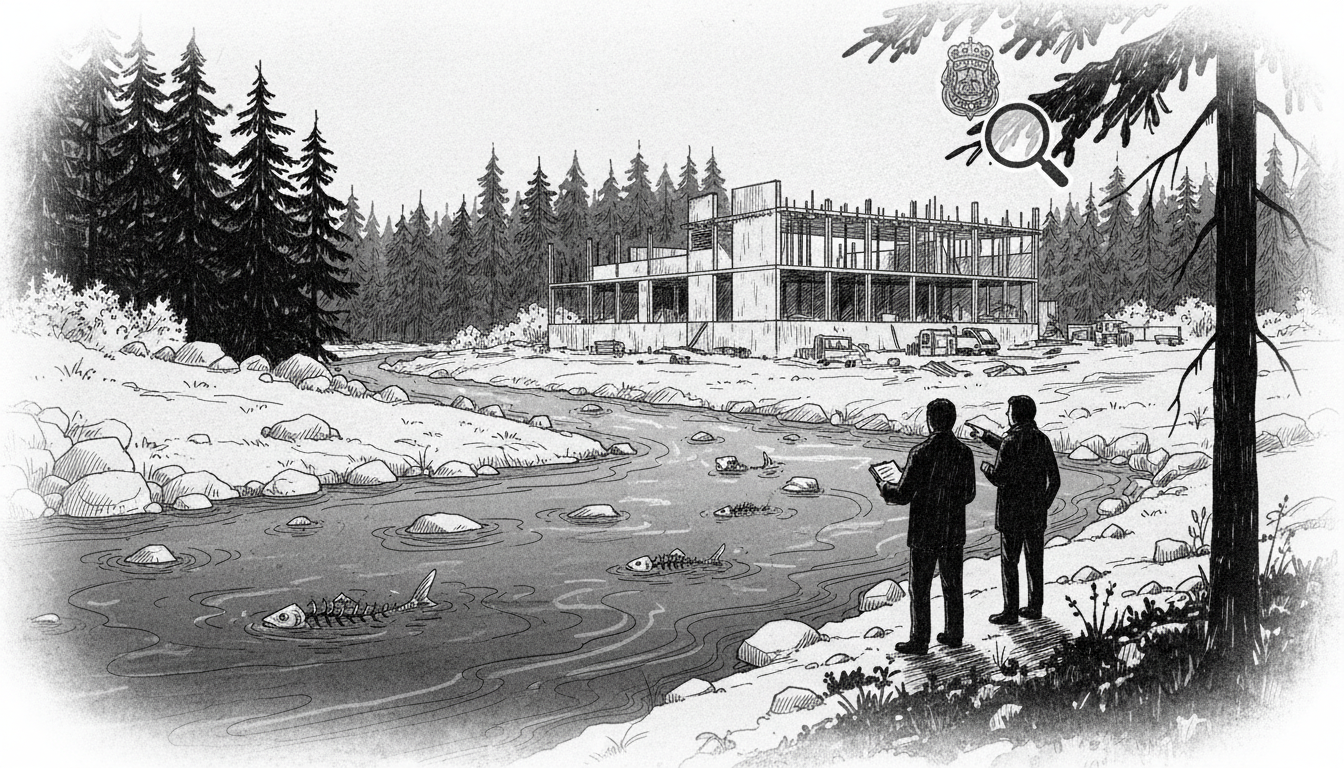A concerning water pollution incident has turned a creek in Askim, Gothenburg gray, prompting formal police reports from both the Swedish Sportfishermen Association and the local environmental administration. The discoloration of Otterbäcken creek raised immediate alarms about potential harm to local fish populations.
Michael Seeberg of the Sportfishermen Association expressed deep concern about the timing and impact. 'It's very sad that this happened,' he stated. 'Sediment can suffocate fish if it settles on their gills. What makes this particularly troubling is that we're currently in the sea trout spawning season, and this is one of the most important areas for the population.'
The incident began when the non-profit organization received a tip from the public about unusual conditions in the creek. Upon investigation, they discovered the water had turned a blue-gray color. The organization traced the pollution upstream to a large hose discharging directly into the waterway. The source was identified as construction work on a new swimming hall adjacent to the creek.
Construction runoff, known as 'länsvatten' in Swedish, had entered the creek system. This water typically contains fine stone dust called 'borrkax' that forms during rock drilling operations. Magnus Elsilä, project manager for the swimming hall construction, confirmed the discharge originated from construction site water pumping but noted contractors are required to follow strict environmental guidelines.
'In our agreement, the contractor must follow the guidelines if they're going to discharge construction water,' Elsilä explained. 'They hired environmental consultants to monitor this. Something clearly failed here, but I can't specify what at this time.'
Authorities acted quickly to stop the discharge on the same day it was reported. By Thursday, construction representatives provided images showing the creek had returned to its normal clear state. However, the environmental damage assessment continues.
This incident highlights the ongoing challenge of balancing urban development with environmental protection in Sweden's sensitive water ecosystems. Sweden maintains strict environmental laws, particularly regarding water quality, given the country's extensive coastline and numerous freshwater systems.
Both reporting organizations have filed police reports, and the case will be investigated as a potential environmental crime. Field tests are planned at the site, while the Sportfishermen Association continues to monitor the stretch of creek for any ongoing impact on fish stocks.
'Some of the discharge has settled on the bottom,' Seeberg noted. 'This creates a risk that new eggs might not survive, but we can't say for certain at this point.'
The situation demonstrates how quickly construction activities can impact sensitive aquatic environments, even in a country known for strong environmental regulations. The investigation will determine whether proper protocols were followed and what consequences the construction company might face.
Local environmental groups have long advocated for stronger oversight of construction near waterways, particularly during critical biological periods like spawning seasons. This incident may renew calls for enhanced monitoring and stiffer penalties for environmental violations affecting Sweden's aquatic ecosystems.
